Actors
Heterochromatic Girl
AKA Norma Eberhardt. Her heterochromia was reportedly the trait that initially attracted the attention of a photographer, leading to a modeling (and later acting) career.Wikipedia has a list of other actors with heterochromia, but Eberhardt's condition was far more pronounced that most of the other people on the list.
More info: curator's cabinet


Posted By: Alex - Thu Oct 05, 2023 -
Comments (4)
Category: Actors, Eyes and Vision
Biggest gratuity ever?
In 1941, when Dolores Moran was 15, she worked as a waitress at a drive-in restaurant in San Jose, California. One day she served a local farmer some coffee and hamburger. The next year Moran left San Jose and moved to Hollywood where she achieved brief fame as an actress.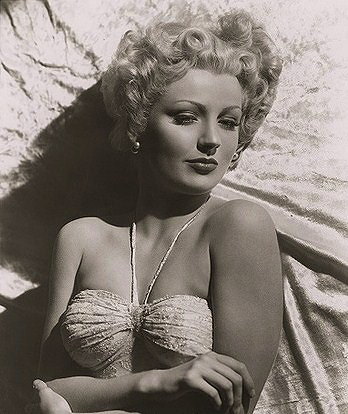
Dolores Moran. Image source: wikipedia
By the 1960s her acting career had ended. But then, in 1968, Moran learned that the farmer she had served at the drive-in 27 years ago had died, leaving her his apricot orchard valued at around $300,000 (or $2.5 million in today's money).
Moran had no memory of serving the farmer, whose name was Anthony Ponce. Nor had the two ever communicated since then. She said, "for the life of me I can't remember the man." But evidently she had made a big impression on him.
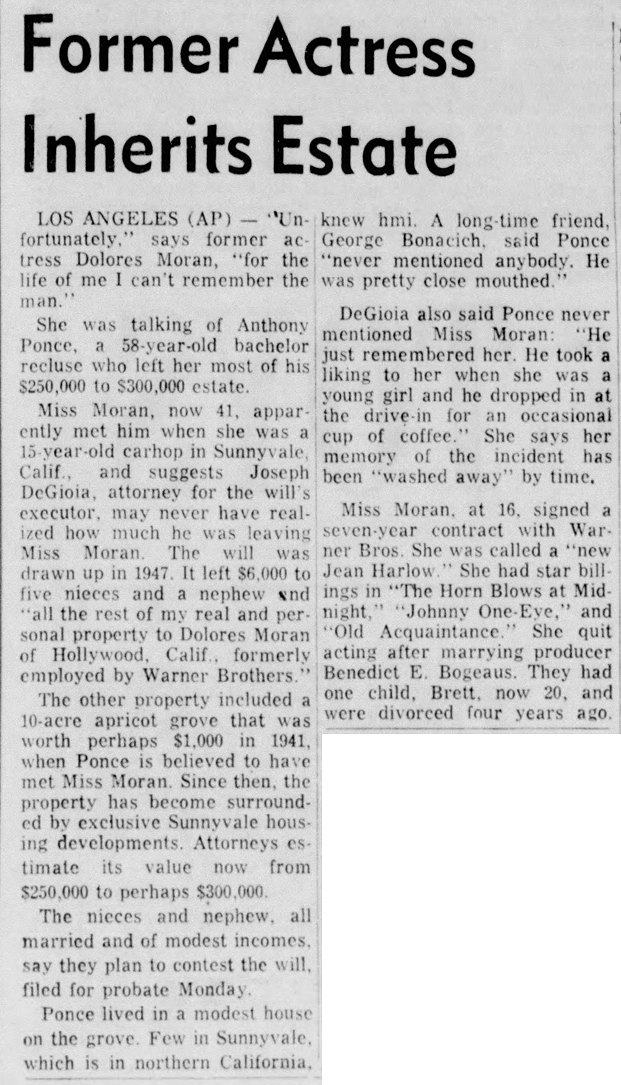
Monroe News Star - Dec 18, 1968
Ponce's relatives contested the will, arguing that he was not of sound mind when he made it. I haven't been able to find out how the case was settled, but I'm guessing Moran got to keep the orchard since it's usually fairly difficult to invalidate a will.
If she did get to keep it, then that would have to count as one of the biggest gratuities of all time. Perhaps the biggest? Especially for an order of coffee and hamburger.
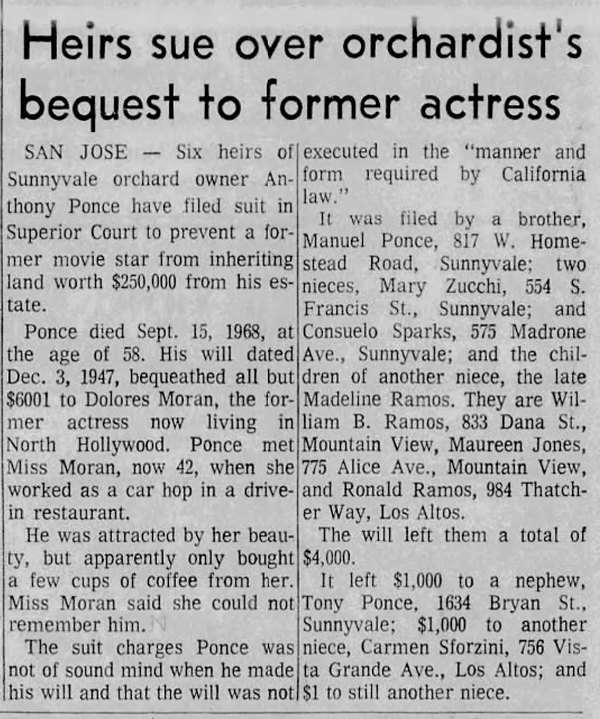
Peninsula Times Tribune - Feb 19, 1969
Posted By: Alex - Thu Apr 06, 2023 -
Comments (3)
Category: Death, Inheritance and Wills, Law, Restaurants, Actors
Obscure actor pickets Hollywood
Feb 1938: Self-proclaimed obscure actor Emil Sitka picketed on Hollywood Boulevard, declaring that Hollywood was unfair to him.I don't think that this stunt brought him much recognition, but he did, eventually, gain success in Hollywood when, in 1947, he began appearing in Three Stooges' films. He ended up being known as the "fourth stooge". From wikipedia:
More info: his IMDB page

Pittsburgh Press - Feb 6, 1938
Posted By: Alex - Sun Apr 03, 2022 -
Comments (1)
Category: ShowBiz, 1930s, Actors
Vincent Price’s WITCHCRAFT AND MAGIC
Posted By: Paul - Wed Apr 24, 2019 -
Comments (0)
Category: Excess, Overkill, Hyperbole and Too Much Is Not Enough, Horror, Fantasy, Myths and Fairytales, 1960s, Actors
Lota Cheek
Apparently Lota Cheek was her real name.She was the daughter of Georgia farmer Leon Cheek. After winning a beauty contest in 1921, in which she was declared America's prettiest girl, she became a successful actress in New York City. In 1922, she was involved in a scandalous divorce case (her husband was simultaneously married to another woman). By 1925, she had remarried and took the name of her new husband, Sanders. The last record I can find of her is from 1927, when she was featured in an ad for Colgate toothpaste.
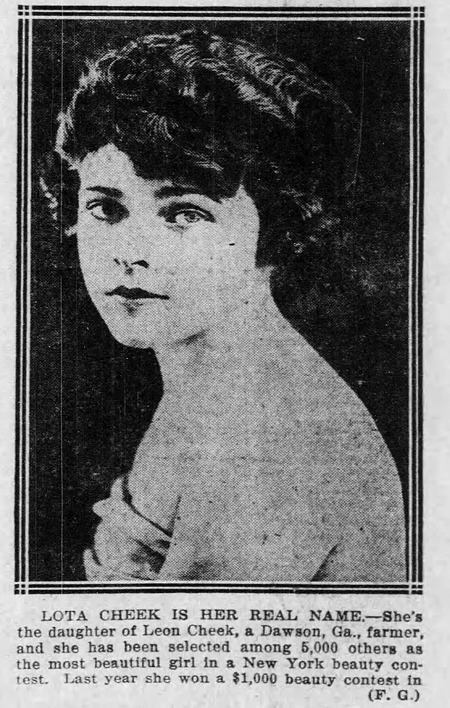
Wilmington Morning News - Jun 15, 1922
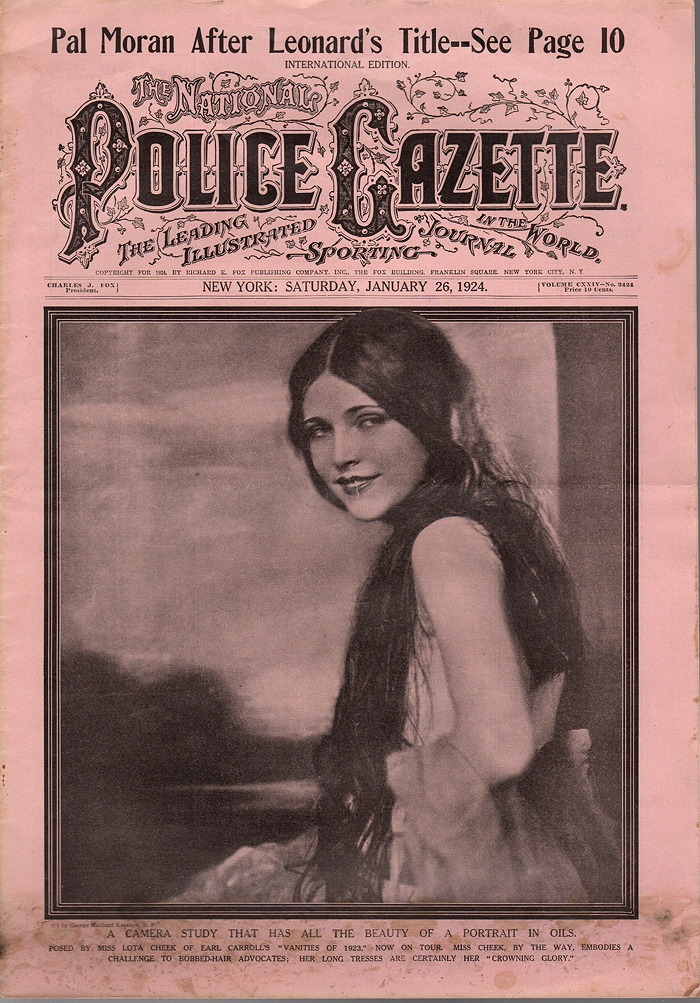
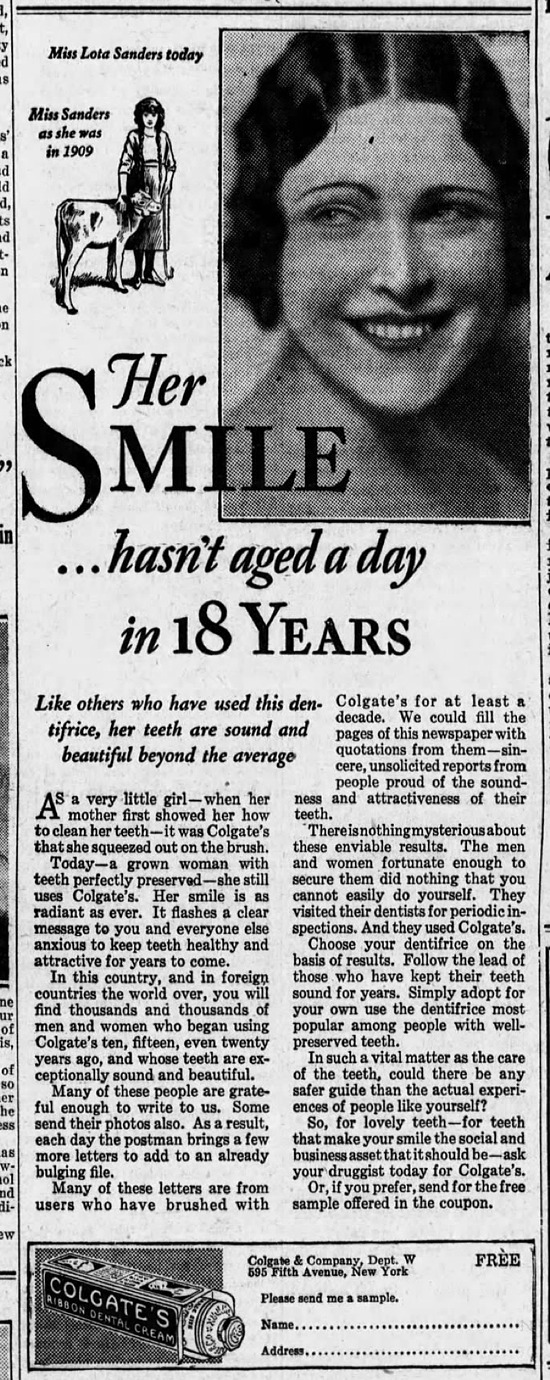
Baltimore Sun - Dec 8, 1927
Posted By: Alex - Wed May 30, 2018 -
Comments (2)
Category: Odd Names, 1920s, Actors
Home on Wheels
Dora Bryan was certainly somewhat homely for a famous actress, with a female assistant prettier than herself. And surely anyone who names their parakeet "Cecil Gibson" must've been a few caravans shy of a trailer park.
Posted By: Paul - Thu Oct 19, 2017 -
Comments (6)
Category: Motor Vehicles, 1950s, Actors
The Voice of Snow White
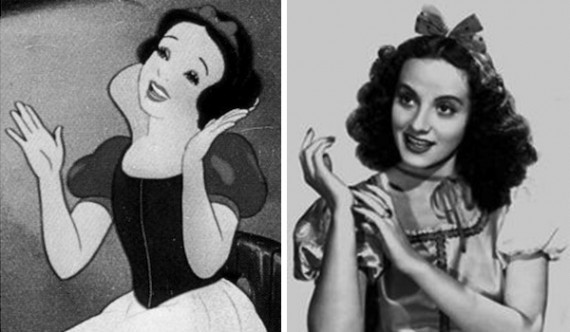
Snow White and Adriana Caselotti (source: The Disney Wiki)
I came across a story in a 1938 newspaper about how Adriana Caselotti got the job of being the voice of Snow White in Disney's 1937 movie:
Unfortunately for Caselotti, her dream of becoming a movie actress didn't turn out as she hoped. In fact, providing the voice for Snow White turned out to be the worst career move she could have possibly made as an aspiring actress — because Walt Disney, wanting to preserve the "illusion of Snow White," decided he couldn't have her voice be heard in any other context. So he prevented Caselotti from ever finding work as an actress again, except for minor appearances in The Wizard of Oz and It's a Wonderful Life.
As a consolation prize for having destroyed her career, the Disney company named her a "Disney Legend" in 1994.
From wikipedia:

Wilkes Barre Times Leader - Apr 8, 1938
Posted By: Alex - Sun Jan 08, 2017 -
Comments (1)
Category: Movies, Cartoons, Actors
Chief Os-ko-mon, Broadway Star
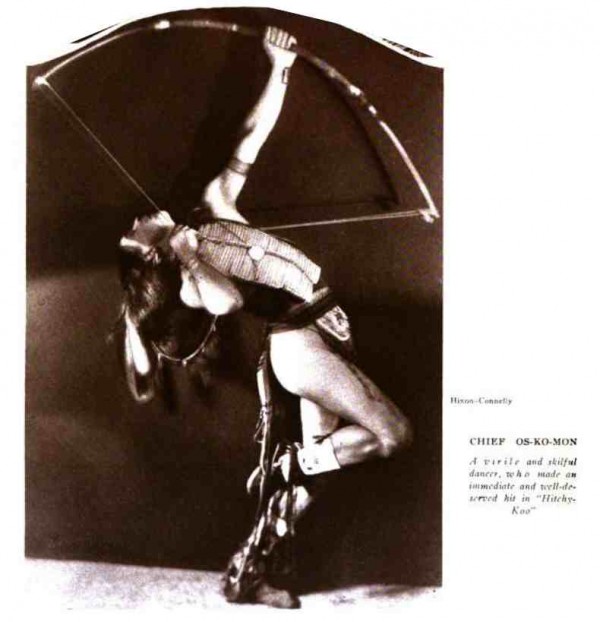
Can we really believe that the Broadway producer behind the HITCHY-KOO REVUE really enlisted an actual Native American into his troupe? Or that the Chief later appeared in another variety show?

And yet the noble Chief Os-ko-mon seems to have actually recorded a record or two. And in this essay, he is deemed a member of the Yakima tribe.
I toss out the question of his legitimacy to all WU-vies. Should he not be recorded as an early stalwart of Native American achievements, Broadway-style?
Posted By: Paul - Tue Jun 16, 2015 -
Comments (3)
Category: 1920s, Actors, Native Americans
David McCallum, Composer
Was it a wise thing, that McCallum stuck to acting, not music? You decide!
Posted By: Paul - Sun Jun 19, 2011 -
Comments (3)
Category: Music, 1960s, Actors
The Krankies
Attempting to explain the unexplainable, visit their Wikipedia entry.
Posted By: Paul - Fri Mar 19, 2010 -
Comments (7)
Category: Humor, Comedians, Television, Actors, Europe

| Who We Are |
|---|
| Alex Boese Alex is the creator and curator of the Museum of Hoaxes. He's also the author of various weird, non-fiction, science-themed books such as Elephants on Acid and Psychedelic Apes. Paul Di Filippo Paul has been paid to put weird ideas into fictional form for over thirty years, in his career as a noted science fiction writer. He has recently begun blogging on many curious topics with three fellow writers at The Inferior 4+1. Contact Us |




